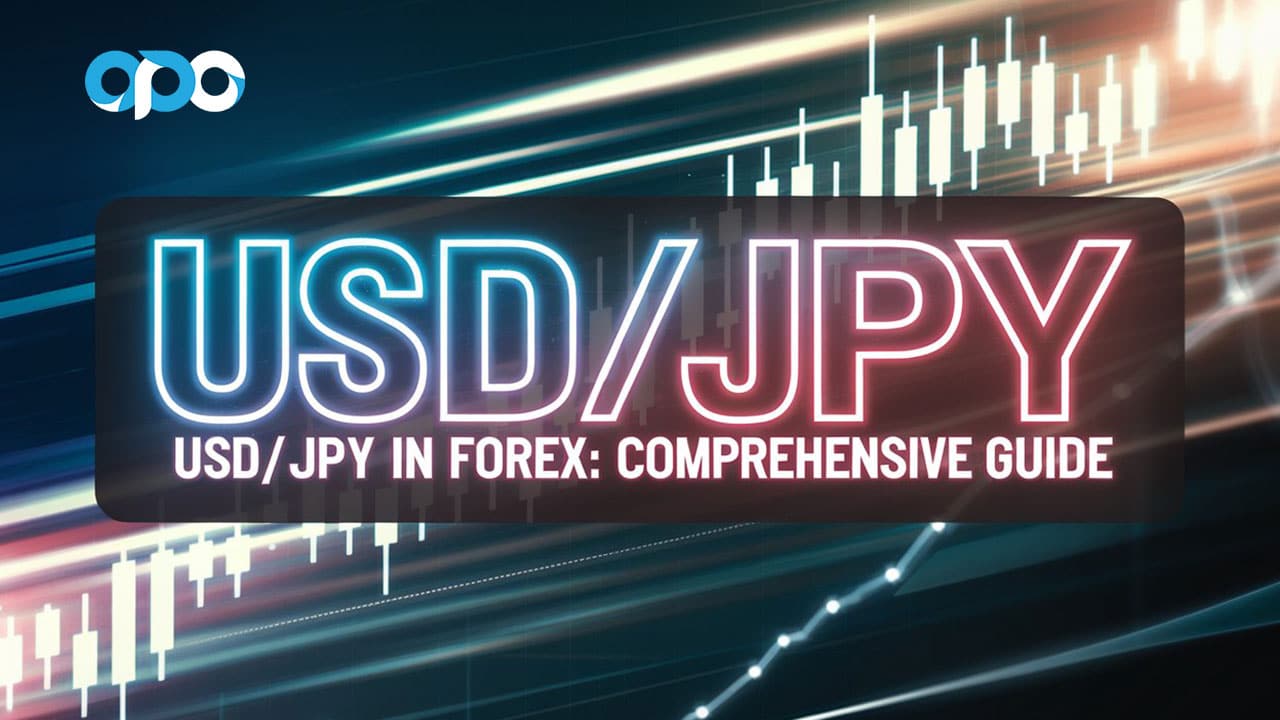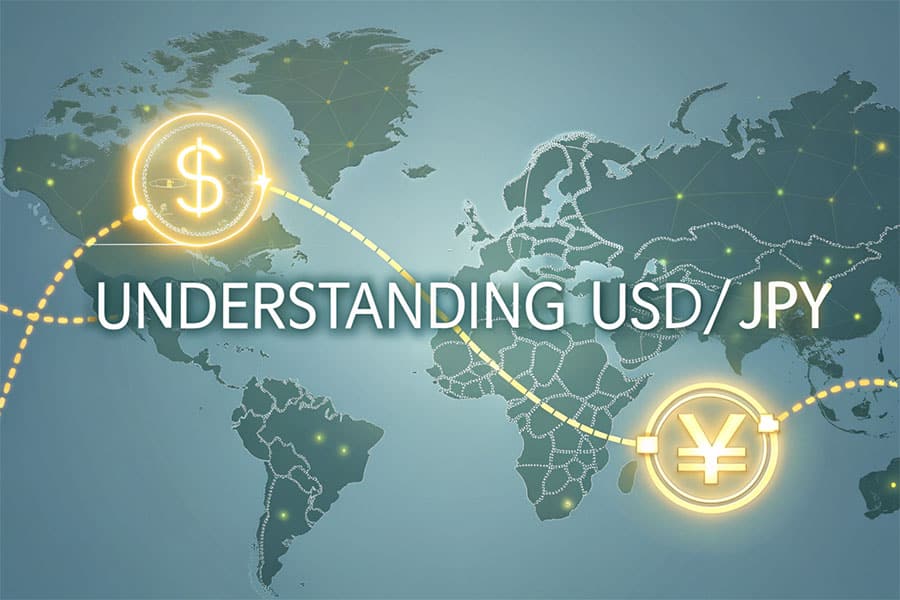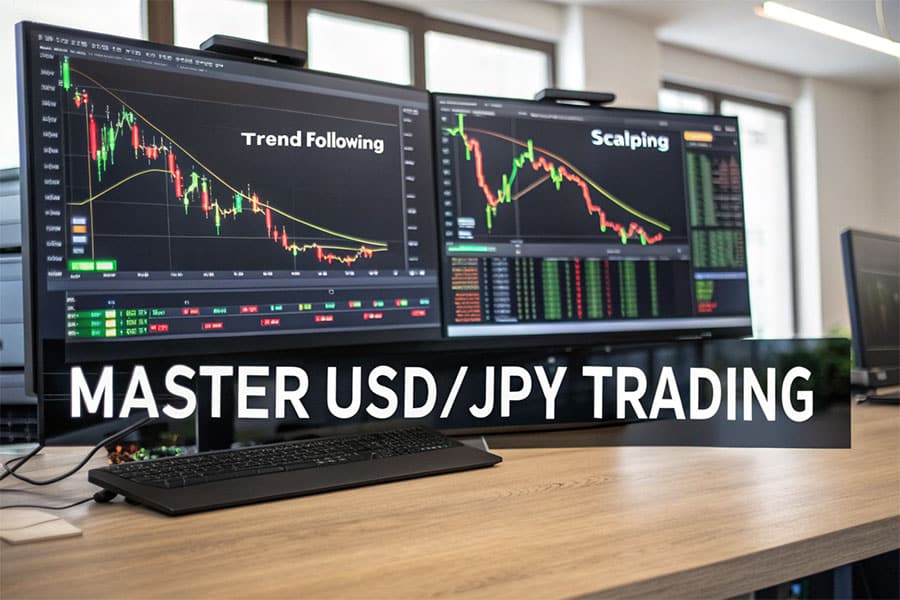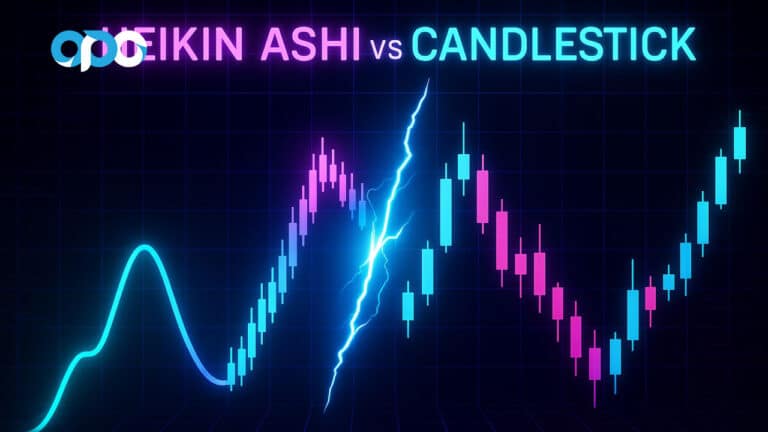Are you eager to navigate the intricate waters of Forex trading and maximize your profits? Understanding the USDJPY pair is your first step towards Forex mastery!

In the dynamic and ever-evolving world of Forex trading, the USD/JPY currency pair stands as a beacon for traders seeking both stability and opportunity. Whether you’re a beginner aiming to diversify your trading portfolio or an experienced investor looking to fine-tune your strategies, knowing what is USDJPY in Forex is crucial. This comprehensive guide delves deep into the essence of the USDJPY pair, exploring its historical significance, the factors that influence its exchange rates, effective trading strategies, and essential considerations for successful trading. Additionally, we’ll provide real-world examples, expert insights, and actionable tips to enhance your trading prowess. Partnering with a regulated forex broker like Opofinance ensures you have the tools and support needed to excel in this lucrative market. Let’s embark on this journey to demystify the USDJPY currency pair meaning and unlock your full potential in Forex trading.
Understanding the USD/JPY Currency Pair
The USD/JPY currency pair is a fundamental component of the Forex market, representing the exchange rate between the US Dollar and the Japanese Yen. This pair is not only one of the most actively traded but also serves as a barometer for economic health and market sentiment globally.

The Foundation: Base and Quote Currencies
In the realm of Forex trading, currency pairs consist of two distinct currencies: the base currency and the quote currency. For the USD/JPY pair, the US Dollar (USD) is the base currency, while the Japanese Yen (JPY) is the quote currency. This setup means that the pair indicates how much of the JPY is required to purchase one unit of the USD. For instance, if the USD/JPY exchange rate is 110.50, it signifies that 1 USD equals 110.50 JPY.
Grasping the relationship between these two currencies is essential for traders aiming to interpret price movements accurately and make informed trading decisions.
Historical Context and Significance
The USD/JPY currency pair boasts a rich historical background that underscores its significance in the Forex market. Following World War II, the Bretton Woods Agreement established a fixed exchange rate system, pegging the Japanese Yen to the US Dollar. This arrangement persisted until the early 1970s when the system dissolved, allowing the USD/JPY pair to float freely in international markets.
Since then, the USD/JPY has mirrored the economic fortunes and policy decisions of both the United States and Japan. The pair is often viewed as a barometer for global economic health, reflecting shifts in trade dynamics, monetary policies, and geopolitical tensions. Japan’s status as a major global economy and the US Dollar’s role as the world’s primary reserve currency further amplify the USD/JPY pair’s prominence. High liquidity ensures that it remains a central focus for forex trading brokers and investors seeking stable yet profitable trading opportunities.
For example, during the 2008 financial crisis, the USD/JPY pair experienced significant volatility as investors sought safe-haven assets, highlighting the pair’s sensitivity to global economic events.
Factors Influencing USDJPY Exchange Rates
Understanding the myriad factors that influence the USD/JPY exchange rate is pivotal for traders aiming to anticipate market movements and strategize effectively. These factors range from economic indicators to geopolitical events, each playing a crucial role in shaping the currency pair’s dynamics.

Economic Indicators Affecting the USD
Several economic indicators from the United States play a pivotal role in determining the strength of the US Dollar against the Japanese Yen. Key indicators include:
Gross Domestic Product (GDP): A higher GDP growth rate signifies a robust economy, boosting investor confidence and strengthening the USD. For instance, the US GDP growth rate reached 2.3% in Q2 2023, indicating steady economic expansion.
Employment Data: Metrics such as the Non-Farm Payroll (NFP) report provide insights into the labor market’s health. Higher employment rates typically lead to a stronger USD. In January 2024, the US added 250,000 jobs, surpassing expectations and bolstering the USD.
Inflation Rates: Controlled inflation can sustain purchasing power, while rising inflation may prompt the Federal Reserve to increase interest rates, further strengthening the USD. As of October 2023, the US inflation rate stood at 3.1%, influencing Fed policy decisions.
Consumer Confidence Index: This measures the optimism of consumers regarding economic conditions. High consumer confidence can lead to increased spending and economic growth, positively impacting the USD. In November 2023, the Consumer Confidence Index rose to 112.5, reflecting strong consumer sentiment.
These indicators are closely monitored by traders as they provide essential clues about the future direction of the US economy and, consequently, the USD/JPY exchange rate.
Read More: 7 USDJPY mistakes that Will Burn Your Forex Portfolio
Economic Indicators Affecting the JPY
Japan’s economic performance is equally influential in shaping the USD/JPY exchange rate. Critical indicators include:
Industrial Production: This measures the output of Japan’s manufacturing, mining, and utilities sectors. Higher industrial production can strengthen the Yen. In September 2023, Japan’s industrial production increased by 1.2%, signaling economic resilience.
Trade Balance: A trade surplus, where exports exceed imports, tends to bolster the Yen, while a trade deficit may weaken it. Japan reported a trade surplus of ¥1.5 trillion in Q3 2023, enhancing the JPY’s strength.
Interest Rates: Set by the Bank of Japan (BoJ), interest rates directly impact investment flows. Higher interest rates can attract foreign capital, strengthening the Yen. The BoJ maintained its policy rate at -0.1% in December 2023, affecting the JPY’s appeal.
Retail Sales: This indicator reflects consumer spending and overall economic health. Strong retail sales can lead to Yen appreciation. In October 2023, Japan’s retail sales grew by 0.8%, indicating robust domestic demand.
Understanding these economic indicators helps traders anticipate potential movements in the USD/JPY pair and adjust their strategies accordingly.
The Crucial Role of Interest Rates and Monetary Policies
Interest rates and monetary policies are among the most significant factors influencing the USD/JPY exchange rate. The Federal Reserve (Fed) and the Bank of Japan (BoJ) are the primary institutions whose decisions impact this currency pair.
Federal Reserve (Fed): When the Fed raises interest rates, it often leads to a stronger USD as investors seek higher returns. For example, the Fed’s decision to hike rates by 0.25% in November 2023 strengthened the USD against major currencies, including the JPY.
Bank of Japan (BoJ): The BoJ’s policies, such as maintaining low or negative interest rates, can weaken the Yen by making Japanese assets less attractive to investors. In December 2023, the BoJ kept its policy rate unchanged, contributing to Yen weakness against the USD.
Divergent monetary policies between the Fed and the BoJ can create volatility in the USD/JPY pair. For instance, if the Fed is tightening while the BoJ maintains an accommodative stance, the USD may strengthen against the JPY. Traders must stay informed about central bank announcements and policy changes to effectively manage their positions in the USD/JPY pair.
In 2023, the Fed’s aggressive rate hikes contrasted with the BoJ’s steady policy, leading to significant movements in the USD/JPY pair as traders reacted to the divergent monetary policies.
Trading Strategies for USDJPY
Effective trading strategies are essential for capitalizing on the opportunities presented by the USD/JPY currency pair. By combining technical and fundamental analysis, traders can enhance their decision-making processes and improve their chances of success.

Popular Trading Strategies
Successful trading of the USD/JPY currency pair often involves a combination of technical and fundamental strategies. Here are some popular approaches:
Trend Following: This strategy involves identifying and trading in the direction of established trends. By using moving averages or trend lines, traders can capitalize on sustained movements in the USD/JPY pair. For example, if the USD/JPY is in an uptrend, a trend-following trader might look for buying opportunities.
Breakout Trading: Traders enter positions when the price breaks through significant support or resistance levels. This strategy leverages the momentum that often follows such breakouts. For instance, a breakout above 115.00 could signal a bullish move in the USD/JPY pair.
Carry Trade: This involves exploiting the interest rate differential between the USD and JPY. By borrowing in a low-interest currency (JPY) and investing in a higher-yielding currency (USD), traders can earn the interest rate spread. This strategy can be profitable in stable market conditions.
Swing Trading: Capitalizing on short- to medium-term price movements, swing traders use technical indicators like RSI or MACD to identify potential entry and exit points. For example, identifying overbought or oversold conditions can help traders make informed decisions.
Scalping: This high-frequency strategy aims to profit from small price changes. Scalpers execute numerous trades throughout the day, leveraging tight spreads in the USD/JPY pair. While this strategy can be profitable, it requires significant time and attention.
Each of these strategies can be tailored to individual trading styles and risk appetites, allowing traders to optimize their approach to the USD/JPY market.
Read More: USD/JPY Scalping
Best Times to Trade USDJPY
Timing is crucial in trading USDJPY forex, as it can significantly impact profitability. The best times to trade the USD/JPY pair are during the overlap of the Tokyo and London trading sessions, typically between 8:00 AM and 12:00 PM GMT. This period offers optimal liquidity and volatility, providing ample trading opportunities.
Additionally, major economic releases from the US and Japan can create significant price movements. Traders should monitor the economic calendar for announcements such as GDP reports, employment data, and central bank statements to anticipate and capitalize on market shifts. For example, the release of the US Non-Farm Payroll (NFP) report can lead to substantial volatility in the USD/JPY pair.
During the overlap of the Tokyo and London sessions, traders can take advantage of the increased trading volume and tighter spreads, enhancing their trading efficiency.
Risks and Considerations
While the USD/JPY currency pair offers lucrative trading opportunities, it is not without risks. Understanding these risks and implementing effective risk management strategies is essential for long-term success in Forex trading.
Volatility Factors
The USD/JPY pair is known for its volatility, which can present both opportunities and challenges for traders. Factors contributing to this volatility include:
Economic Data Releases: Unexpected results can cause rapid price swings. For instance, a higher-than-expected US GDP growth rate can lead to a sharp appreciation of the USD against the JPY.
Geopolitical Tensions: Political instability or international conflicts can lead to swift market reactions. The 2011 Tōhoku earthquake and tsunami, for example, caused significant movements in the USD/JPY pair as investors sought safe-haven assets.
Monetary Policy Changes: Sudden shifts in interest rates or policy direction by the Fed or BoJ can trigger volatility. The Fed’s unexpected rate hike in November 2023 resulted in a rapid strengthening of the USD against the JPY.
Market Sentiment: Changes in trader sentiment, influenced by news or economic outlooks, can cause sharp movements in the USD/JPY pair. Positive sentiment towards the US economy can drive the USD higher, while negative sentiment can lead to selling pressure.
Traders must be prepared to manage these risks through effective risk management strategies, such as setting stop-loss orders and maintaining appropriate position sizes.
Impact of Geopolitical Events
Geopolitical events can have profound impacts on the USD/JPY exchange rate. Events such as trade disputes, political elections, or international conflicts can create uncertainty and influence currency movements. For example:
Trade Disputes: Tensions between the US and Japan can affect trade balances and investor confidence, leading to Yen appreciation or depreciation. The US-Japan trade negotiations in 2019 had notable effects on the USD/JPY pair as traders reacted to potential changes in trade dynamics.
Political Instability: Changes in government or policy directions in either country can disrupt economic stability, impacting the USD/JPY pair. The 2021 Japanese general election, which resulted in policy shifts, influenced the Yen’s performance against the USD.
Global Conflicts: International conflicts often lead to safe-haven flows, where investors flock to the Yen, traditionally considered a safe-haven currency, thereby strengthening it against the USD. The conflict in Ukraine in 2022 saw increased demand for the Yen as investors sought stability.
Staying informed about geopolitical developments is crucial for anticipating potential market movements and adjusting trading strategies accordingly.
Read More: What Are Major Currency Pairs?
Pro Tips for Advanced Traders
Elevate your USD/JPY trading strategies with these advanced tips designed for experienced traders:
- Leverage Economic Calendars: Utilize comprehensive economic calendars to track key data releases from the US and Japan. Anticipating these events can help you position yourself ahead of market movements.
- Advanced Technical Analysis: Employ sophisticated charting techniques such as Fibonacci retracements, Elliott Wave Theory, and Ichimoku Clouds to identify potential entry and exit points with greater precision. These tools can help you anticipate market reversals and trend continuations.
- Hedge Your Positions: Mitigate risk by hedging your USD/JPY positions using options, futures, or other financial instruments. For example, purchasing a JPY put option can protect against a potential decline in the Yen.
- Monitor Central Bank Communications: Pay close attention to statements, press conferences, and meeting minutes from the Fed and BoJ. These communications provide valuable insights into future monetary policy directions.
- Diversify Your Portfolio: Avoid overexposure to the USD/JPY pair by diversifying your Forex portfolio across multiple currency pairs and asset classes. This approach reduces risk and enhances overall portfolio stability.
- Algorithmic Trading: Implement algorithmic trading strategies to execute trades based on predefined criteria. Automated systems can capitalize on market inefficiencies and execute trades with speed and accuracy.
- Sentiment Analysis: Incorporate sentiment analysis tools to gauge the overall market mood. Understanding whether traders are bullish or bearish on the USD/JPY pair can provide additional trading signals.
- Risk-Reward Optimization: Continuously evaluate and optimize your risk-reward ratios. Ensuring that potential rewards outweigh risks on each trade can enhance long-term profitability.
- Stay Updated with Global News: Maintain a keen awareness of global economic and political developments. Real-time news feeds and alerts can keep you informed about events that may impact the USD/JPY exchange rate.
- Continuous Education: Invest in ongoing education and training to stay abreast of the latest trading strategies, tools, and market trends. Advanced knowledge can provide a competitive edge in the Forex market.
By incorporating these pro tips into your trading routine, you can refine your strategies and achieve greater success in trading the USD/JPY currency pair.
Opofinance Services
When it comes to trading the USD/JPY currency pair, partnering with a reliable and regulated broker is paramount. Opofinance stands out as a premier choice for Forex traders, offering a suite of services designed to enhance your trading experience and maximize your potential profits.
ASIC Regulated: Ensuring your investments are secure and compliant with strict regulatory standards, Opofinance is a trusted regulated forex broker committed to maintaining transparency and integrity in all transactions.
Social Trading Service: Connect with experienced traders and mirror their strategies for potentially higher returns. Opofinance’s social trading platform allows you to learn from the best and replicate successful trading practices effortlessly.
Featured on MT5 Brokers List: Access advanced trading platforms with robust tools and features. Opofinance is officially featured on the MT5 brokers list, providing traders with a state-of-the-art interface and comprehensive analytical tools.
Safe and Convenient Deposits and Withdrawals: Enjoy hassle-free transactions with multiple payment options. Opofinance offers secure and efficient deposit and withdrawal methods, ensuring your funds are always accessible when you need them.
Exclusive Trading Resources: Gain access to exclusive market insights, expert analysis, and educational materials tailored to enhance your trading knowledge and skills.
24/7 Customer Support: Benefit from round-the-clock customer support to address any queries or concerns promptly, ensuring a seamless trading experience.

Conclusion
Understanding what is USDJPY in Forex is fundamental for anyone looking to succeed in the dynamic world of Forex trading. The USD/JPY currency pair offers unique opportunities driven by a myriad of economic indicators, monetary policies, and geopolitical events. By mastering the factors that influence its exchange rate and employing effective trading strategies, traders can navigate the complexities of this pair with confidence and precision. Additionally, leveraging the services of a regulated and reliable broker like Opofinance provides the essential tools and support needed for a successful trading journey. Staying informed, adaptable, and strategic is key to thriving in the ever-evolving Forex market.
Key Takeaways
- The USD/JPY currency pair is a highly liquid and widely traded pair in the Forex market, known for its tight spreads and volatility.
- Economic indicators from both the US and Japan, such as GDP, employment data, and industrial production, significantly influence the USDJPY exchange rate.
- Effective trading strategies, including trend following, breakout trading, and carry trades, can enhance trading success in the USD/JPY pair.
- Managing risks associated with volatility and geopolitical events is crucial for sustained profitability in USDJPY trading.
- Partnering with a regulated Forex broker like Opofinance provides essential support, advanced trading tools, and secure transaction methods to optimize your trading experience.
How do seasonal trends affect USDJPY trading?
Seasonal trends can influence the USD/JPY currency pair as certain times of the year may see predictable patterns due to factors like fiscal year-end activities, holiday spending, and agricultural cycles in Japan. For instance, the end of the fiscal year in Japan (March) can lead to increased Yen demand, potentially strengthening the JPY against the USD. Traders can leverage historical seasonal data to identify recurring trends and adjust their strategies accordingly, enhancing the accuracy of their trades.
What impact do natural disasters have on USDJPY exchange rates?
Natural disasters can significantly impact the USD/JPY exchange rate by disrupting economic activities and altering investor sentiment. In Japan, a major earthquake or typhoon can damage infrastructure, reduce industrial output, and lead to economic uncertainty, potentially weakening the Yen. Conversely, in the aftermath of a disaster, international aid and rebuilding efforts may attract foreign investment, supporting the Yen. Traders should monitor news about natural disasters and assess their potential economic implications to make informed trading decisions.
Can geopolitical alliances influence USDJPY movements?
Yes, geopolitical alliances can influence USD/JPY exchange rates by affecting trade relations, economic policies, and investor confidence. Strong alliances between the US and Japan can lead to increased trade and investment flows, strengthening the USD/JPY pair. Conversely, deteriorating alliances or conflicts can create economic uncertainty, leading to Yen appreciation as a safe-haven currency or USD depreciation due to reduced trade. Understanding the geopolitical landscape and its potential impact on economic relations is essential for predicting USDJPY movements accurately.







